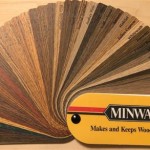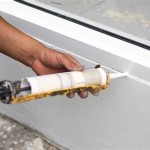Full House Interior Painting Cost: A Comprehensive Guide
Determining the cost of painting the interior of a full house is a multifaceted process, heavily influenced by several factors. This article aims to provide a comprehensive overview of these factors, offering insights into how homeowners can estimate painting costs and make informed decisions about their projects. Understanding these aspects allows for budgeting effectively and selecting the right painting professionals.
The overall square footage of the house is a primary determinant of cost. Painters typically charge per square foot for labor and materials. A larger house naturally requires more paint and more labor hours, translating to a higher total expense. The number of rooms also contributes; more rooms usually mean more walls, trim, and doors to paint.
The condition of the walls has a substantial impact on the overall cost. Walls with cracks, holes, or uneven surfaces necessitate preparation work like patching, sanding, and priming. This preparation increases both the labor and material costs. Walls with existing wallpaper may require removal, which can be a time-consuming and potentially expensive process.
The type of paint chosen also plays a significant role. Higher-quality paints generally offer better coverage, durability, and a more aesthetically pleasing finish, but these come at a higher price point. Different paint finishes, such as matte, eggshell, satin, semi-gloss, and gloss, also have varying price ranges due to their different compositions and applications.
Labor costs are another significant component of the overall expense. Experienced and reputable painters often charge higher rates, reflecting their expertise, efficiency, and attention to detail. Geographic location also influences labor rates, as costs of living and demand for painting services can vary from region to region.
Key Factors Influencing Full House Interior Painting Cost
Several key factors collectively determine the overall cost of an interior painting project. Understanding these factors is crucial for accurate budgeting and realistic expectations.
1. Square Footage and Number of Rooms
The square footage of the home being painted is arguably the most significant cost driver. Painting contractors typically use square footage as a basis for estimating both labor and material costs. The more square feet of wall space that needs to be covered, the more paint is needed, and the more time is spent applying it. Furthermore, the number of rooms affects the cost. Each room presents its own set of challenges, including corners, trim, and doors, all of which require careful attention and time. A house with many small rooms will likely cost more to paint than a house with fewer, larger rooms, even if the total square footage is the same. This is due to the increased amount of trim and detail work involved in painting multiple smaller spaces.
Accurately measuring the square footage is essential for getting a reliable estimate. This includes calculating the surface area of walls and ceilings. Keep in mind that factors like high ceilings or unusual architectural features can also increase the labor time required, thereby impacting the overall cost.
2. Wall Condition and Preparation
The condition of the walls is another crucial factor affecting painting costs. Walls that are in poor condition require more preparation work, which in turn adds to the overall expense. Preparation might involve filling cracks and holes with spackle or joint compound, sanding rough patches, repairing water damage, and applying primer. In some cases, extensive repairs may be needed, such as replacing sections of drywall or repairing plaster. These repairs can significantly increase both material and labor costs.
Walls covered in wallpaper require a particularly labor-intensive preparation process. Removing wallpaper can be challenging and time-consuming, and it sometimes damages the underlying wall surface. This damage must then be repaired before painting can begin. Some contractors charge extra for wallpaper removal, while others include it in their overall estimate. The cost of wallpaper removal can vary depending on the type of wallpaper, the size of the area covered, and the condition of the walls beneath.
Walls that have been previously painted with dark or glossy colors may require multiple coats of primer and paint to achieve adequate coverage. This can also add to the overall cost, as it increases both the amount of paint needed and the time spent on the project.
3. Paint Type and Finish
The type and quality of paint selected have a direct impact on the painting cost. Higher-quality paints generally offer better coverage, durability, and color retention compared to lower-quality options. While these paints may be more expensive upfront, they can save money in the long run by requiring fewer coats and lasting longer. Premium paints also tend to be more scrubbable and resistant to stains, making them a good choice for high-traffic areas such as kitchens, bathrooms, and hallways.
Different paint finishes, such as matte, eggshell, satin, semi-gloss, and gloss, also have different price points. Matte finishes, which have a low sheen, are often used in bedrooms and living rooms to create a soft and inviting atmosphere. Eggshell finishes have a slightly higher sheen and are more durable than matte finishes, making them a good choice for hallways and dining rooms. Satin finishes are even more durable and offer a subtle shine, making them suitable for kitchens and bathrooms. Semi-gloss and gloss finishes are the most durable and easiest to clean, making them ideal for trim, doors, and cabinets. The type of finish selected will depend on the desired look and the specific needs of each room.
Specialty paints, such as those with mildew-resistant or low-VOC (volatile organic compounds) formulations, can also add to the overall cost. Mildew-resistant paints are often used in bathrooms and other areas prone to moisture, while low-VOC paints are chosen by homeowners concerned about indoor air quality. These specialty paints offer specific benefits but typically come at a premium price.
Additional Cost Considerations
In addition to the key factors outlined above, several other cost considerations can impact the overall expense of painting a full house interior.
The complexity of the project can influence the final cost. For example, painting ceilings, trim, and doors typically requires more time and skill than painting walls. Ceilings can be particularly challenging to paint due to their height and the need to avoid drips. Trim and doors require precise cutting and attention to detail, which can increase labor costs. Intricate architectural features, such as crown molding or wainscoting, can also add to the complexity and cost of the project.
The homeowner's level of involvement can also affect the cost. Some homeowners choose to handle tasks such as moving furniture, covering floors, and taping off trim to reduce labor costs. However, it's important to be aware that these tasks can be time-consuming and require some skill. If not done properly, they can actually increase the overall cost by requiring the painting contractor to spend more time correcting mistakes.
The timing of the project can also play a role in cost. Painting contractors are often busier during certain times of the year, such as the spring and summer months. During these peak seasons, they may charge higher rates due to increased demand. Homeowners who are flexible with their scheduling may be able to save money by hiring a painter during the off-season, such as the fall or winter. However, it's also important to consider the weather conditions when scheduling a painting project, as extreme temperatures or humidity can affect the paint's drying time and overall quality.
Obtaining Accurate Estimates
Getting accurate estimates is essential for budgeting effectively for a full house interior painting project. Homeowners should obtain multiple estimates from reputable painting contractors before making a decision. When requesting estimates, it's important to provide contractors with as much information as possible about the project, including the square footage of the house, the number of rooms, the condition of the walls, and the type of paint desired. Contractors should also be informed of any specific challenges or concerns, such as wallpaper removal or the presence of lead paint.
A detailed estimate should include a breakdown of all costs, including labor, materials, and any additional fees. It should also specify the scope of work, including the preparation work that will be performed, the number of coats of paint that will be applied, and the type of paint that will be used. Homeowners should carefully review each estimate and ask any questions they may have before signing a contract.
It's important to be wary of estimates that seem too good to be true. Unusually low estimates may indicate that the contractor is cutting corners on materials or labor, which could result in a poor-quality paint job. It's always best to choose a reputable contractor with a proven track record, even if their estimate is slightly higher.
Budgeting Tips
Budgeting for a full house interior painting project can be challenging, but there are several steps homeowners can take to make the process easier.
First, it's important to establish a realistic budget based on the size of the house, the condition of the walls, and the desired quality of paint. Online painting cost calculators can be helpful in estimating the overall cost, but it's important to remember that these are just estimates. The actual cost may vary depending on the specific circumstances of the project.
Homeowners can also save money by doing some of the preparation work themselves, such as moving furniture, covering floors, and taping off trim. However, it's important to be realistic about their skills and abilities. If they are not comfortable performing these tasks, it's best to leave them to the professionals.
Choosing a less expensive paint can also save money, but it's important to consider the long-term implications. Lower-quality paints may require more coats and may not last as long as higher-quality paints. In the long run, it may be more cost-effective to choose a higher-quality paint that will last longer and require less maintenance.
Finally, homeowners can consider painting one room at a time to spread out the cost over a longer period. This can make the project more manageable and less of a financial burden.

Cost To Paint A House Whole Painting Fixr

How Much Does It Cost To Paint The Interior Of A House In Paintrite Pros

Cost To Paint A House Whole Painting Fixr

How Much Does Interior House Painting Cost A New Leaf

How Much Does It Cost To Paint The Interior Of A House In Paintrite Pros

How Much Does It Cost To Paint The Interior Of A House Angi

How Much Does Interior House Painting Cost In 2024 Forbes Home

Cost To Paint A House Whole Painting Fixr

2024 Interior Painting Costs Average Cost To Paint Of House

Cost Of Painting Your Home Per Sq Ft In 2024 Detailed Guide
Related Posts








